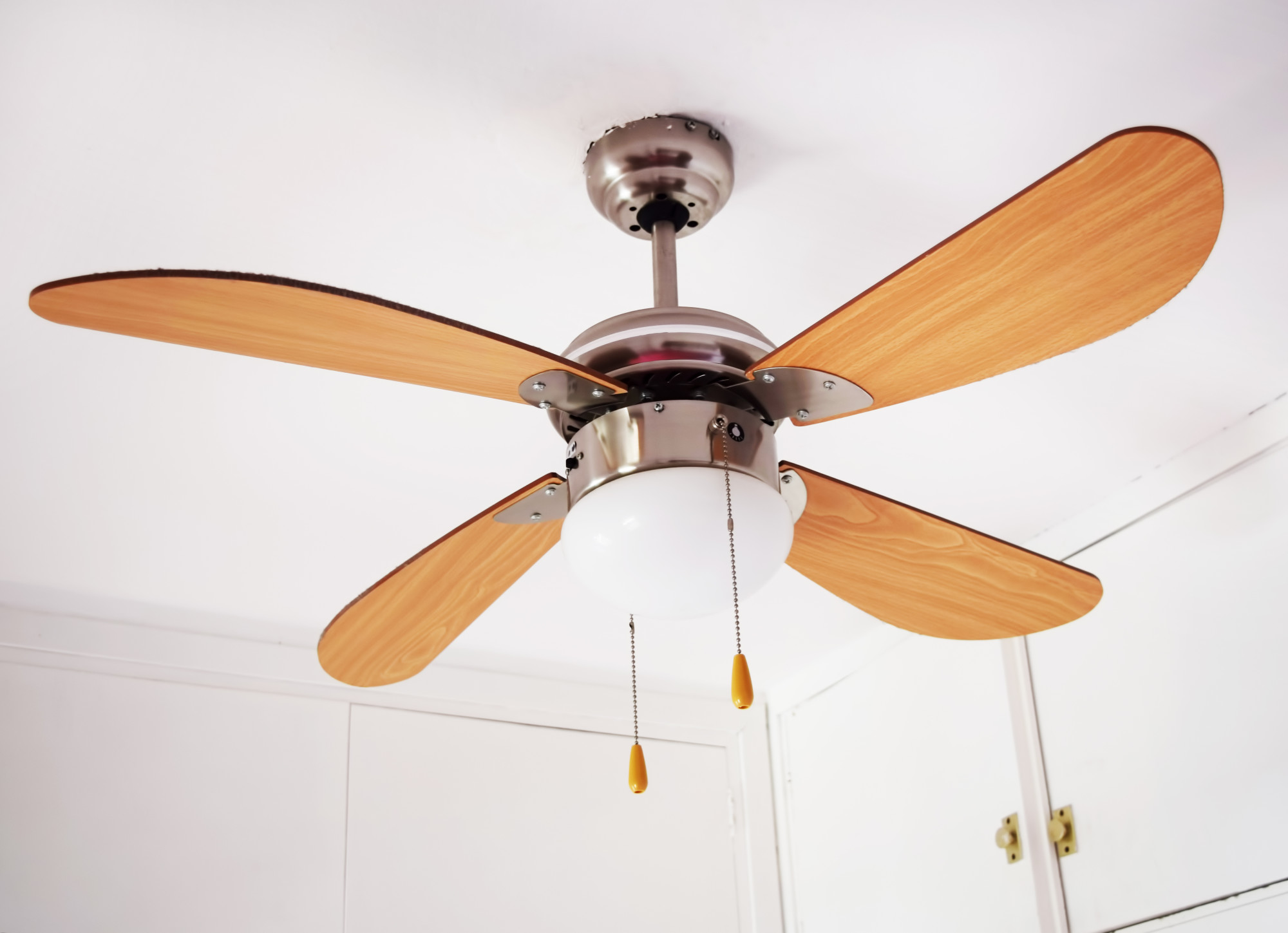Believe it or not, ceiling fans are making a comeback. They’re not returning in their 80s and 90s fashion, they’re actually coming back in whole new designs, covering the rustic to the futuristic.
Whether you’re looking for a way to be more environmentally friendly, to cut down on your energy costs, or to add a statement piece to an otherwise plain space, you’ll want to pick the right ceiling fan type for the job.
If you can’t differentiate between a standard ceiling fan and a low-profile one, no worries. You’ve come to the right place.
Keep on reading for our full breakdown of the most common ceiling fan types, and what makes every one of them unique.
Ceiling Fan Type 101: Standard Ceiling Fans
Before we start exploring the fancy and unorthodox types of ceiling fans, let’s make sure that you have a solid understanding of the most common type of them all. The standard ceiling fan.
This one is the basic type of fan that you can find in the majority of people’s homes. Admittedly, as time goes by, this type of fan has started coming into a variety of shapes and styles that can match even the most uncommon decor scheme.
For example, if you’ve been looking at the perfect addition to your modern yet farmhouse rustic fan, the market can deliver.
Generally speaking, a standard ceiling fan can be identified by having around four to five blades. This is the only common attribute to this fan type, as you can customize the rest of the details to your heart’s content.
Moreover, you can expect to see a downrod used for this type of fan, which is a metal rod that connected the motor housing and your fan’s mounting brackets.
This downrod allows you to mount your fan either on flat or even sloped ceilings. But, you’ll want to pick the right fixture for your ceiling, and that it works with the downrod you have.
You don’t want to discover that your fixture is incompatible with your downrod in the middle of installation.
Environmentally Friendly: The Energy Star Ceiling Fans
This type of fan is a great way to save both the environment and your wallet. They can come in a variety of styles, but there’s the main reason behind identifying them in a separate category.
For any fan to be given an Energy Star rating, it needs to meet a certain threshold, which is using from 20% to 30% less energy than the benchmark placed by the federal standards.
Basically, the Environmental Protection Agency (EPA) has made this classification to help potential customers on their shopping journey. It’s a confirmation that the product has been through testing, and it has presented sufficient proof that it does use less energy than average.
Furthermore, Energy-Star fans tend to come with aerodynamic blades and efficient motors that allow the machine to consume less energy.
While you can respect around 20% of energy savings when you use a regular energy-saving fan, you can enjoy up to 50% of energy efficiency, specifically if you choose a fan with integrated lights.
Dual Motor Ceiling Fans for Double the Power
This is a type of fan that comes with a central motor housing that links to two different horizontal rods. Each rod comes with its own adjustable fan head.
The main perk of owning one of those fans is that each “fan” can be set to its own speed. Also, if you’re looking for a show-stopping decorative piece, then you’ll love getting a dual-motor fan. Those tend to come in the most unique of designs, and artistry.
Also, the dual-motor allows your fan to circulate the air in a specific direction, or even cover a wider area than an average fan.
The Low Profile Ceiling Fans
You might have heard of this type of fan by different names. Known as flush mount ceiling fans, or hugger fans, this is the fan that you can install when your home ceilings are less than eight feet tall.
Think of a traditional standard fan with its downrod, then remove that metal pole.
Low-profile ceiling fans will have the actual fan installed right onto the mounting bracket. This is the only way you can get a fan that would stay above the required floor clearance.
Sure, the blades will be close to your ceiling, so it won’t be as high-performing as other types of fans. Yet, it can still cut down on your air conditioning costs.
Besides, if you’re looking at fans as more of decor pieces than temperature regulating gadgets, you can have a lot of fun customizing your low-profile ceiling fan.
You just won’t have to worry or fidget with a downrod.
The Future of Fans: Remote-Controlled Ceiling Fans
You can get a remote-controlled ceiling fan that’s considered to be a standard one, a dual-motor one, or any other type of fan.
However, if you’ve been dealing with mobility problems, or you have rather high ceilings, then getting a fan with a remote-controlling capability is the way to go.
If you’re also looking for the perfect outdoor fan that you’ll want to cover a large surface area, like a restaurant, an auditorium, or other commercial properties, then a remote-controlled one can create great circulation.
In addition, it can be really helpful when you’re dealing with complex weather patterns that cause you to keep turning on and off your fans. Having a remote-control will save you a lot of heartache and effort.
Ready to Enter the World of Ceiling Fans?
We know how overwhelming it can be to explore and pick the right fan for your needs, especially if this is the first time you’re hopping on the ceiling-wagon.
Hopefully, our article has shed some light on the different fan types, so you’ll have a simpler and quicker time picking the right ceiling fan type for your place.
If you’ve liked this little explainer, then make sure to check out our home section for all the additional tips and tricks you could need to create the home of your dreams.











